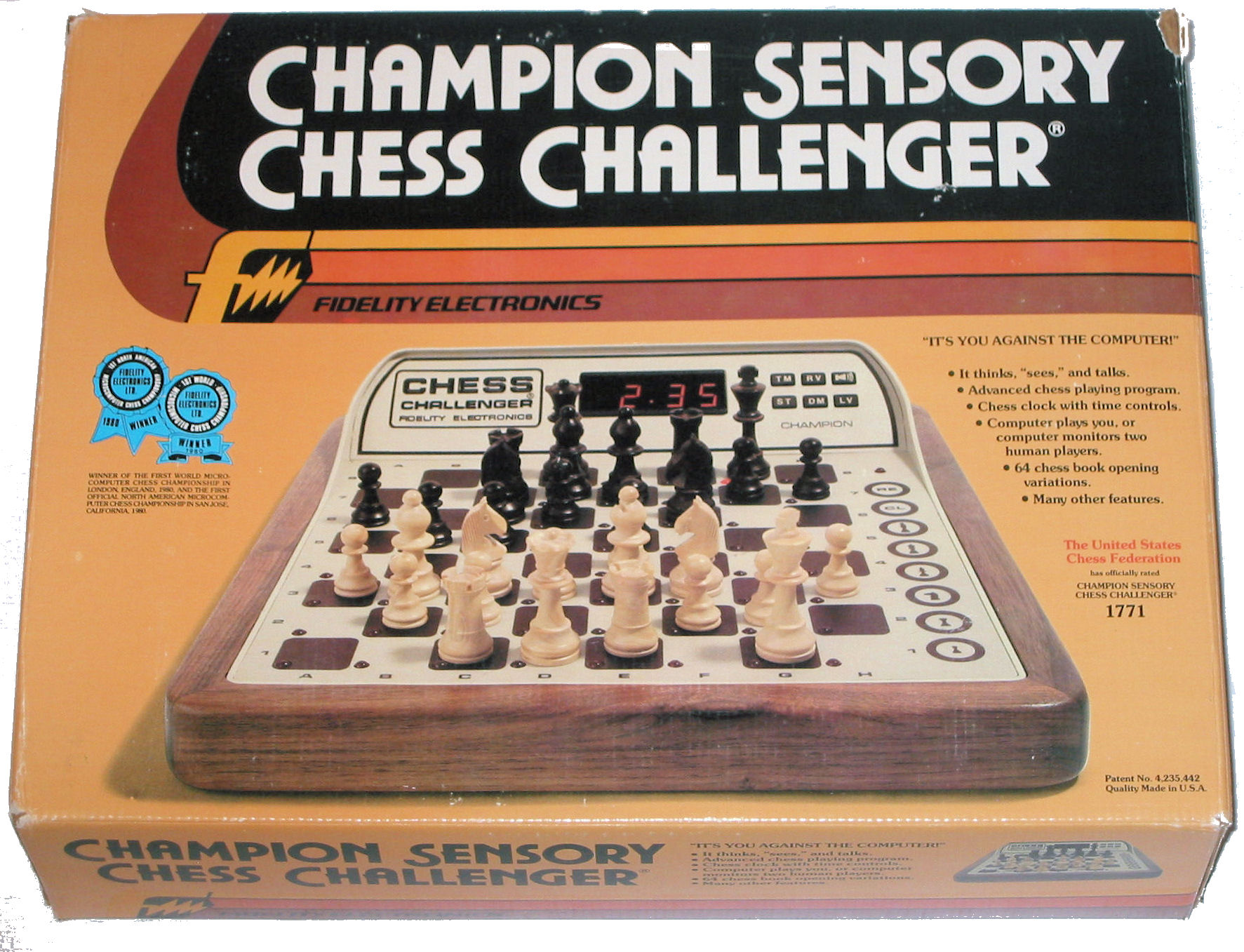
This electronic game is not really a "handheld" device per se, since unattached traditional wooden chess pieces are used in the play of the game. Thus, players would normally use this device on a table.
Manufactured and copyrighted in 1981 by Fidelity Electronics of Miami, Florida, the device was donated to the Museum from the company's Canadian headquarters in 1982. This electronic device was the first of its type in the Museum collection. It was donated at a time when the first desktop microcomputers were being introduced on the University campus. The photograph of the box illustrates the device and offers some interesting information about the attributes or "features" of the device, namely:
It's you against the computer
It thinks, sees, and talks
Advanced Chess playing program
Chess check with time controls
Computer plays you or computer monitors two human players
The box (33.4cm long x 43.4cm wide x 11.2cm thick) contains: the chess computer, 32 chess pieces, an electric transformer, and an instruction book.
The chess computer itself is 32.5cm long x 29cm wide x 8.5cm thick, in a walnut colored housing. In the raised top rear window, time appears in red digits. To the right of this window are 6 touch sensitive buttons, namely: time (TM), reverse (RV), sound (symbol), set (ST), display move (DM), level (LV). These buttons enable the player to input "setup" instructions as to how the player wants to play each game.
The playing surface itself is a touch sensitive traditional 8X8 chess matrix in brown and beige. Along the left and right sides of the board are the traditional row numbers of 1 though 8, and along the bottom are the traditional column letters of A though H. These enable the identification of a specific square in the matrix. In the lower left of each square is a red Light Emitting Diode.
Along the right side of the playing surface are 7 numbered touch sensitive circles in a vertical line. Numbers one though five contain silhouettes of the chess pieces: 1 - pawn, 2 - rook, 3 - bishop, 4 - queen, 5 - king. Number 6 is "clear" (CL) and number 7 is "reset" (RE). These buttons enable the player to verify the position of a piece on the matrix, reset where a piece has been placed, or clear the arrangement.
On the rear of the raised housing are two audio speakers. The computer has a 50 word vocabulary. In addition to the speakers, there is a socket for a 274cm long wire attached to a 5.7cm long x 5cm wide x 5.5cm thick transformer. A second wire on the transformer is to be plugged into an electrical outlet in order to provide electric power to the unit. The bottom side of the unit features 5 square raised rubber legs which provide stability to the unit placed on a table. There are also 8 holes in the bottom of the unit used to enable the discharge of heat generated by the computer. An additional socket on the top rear enables a special chess "printer" to be attached.
While the wooden chess pieces appear to be "traditional", these should be considered as such in design only. Embedded in the base of each piece is a small round magnet which not only provides some stability to the otherwise very light pieces, but has a more important function as well.
The board surface acts as "touchscreen". When the player presses the piece with the side of the bottom on the middle of a square, this informs the system where in the matrix the piece has been placed. A light touch is not sufficient. Thus, a lost piece cannot be replaced with just an ordinary wooden chess piece.
Over the ensuing years since this game was first produced, there have been many new developments in the evolution of chess playing software as well as in microcomputer hardware. This model of the Chess Challenger has been superceded by newer models.
Last update February 26, 2010